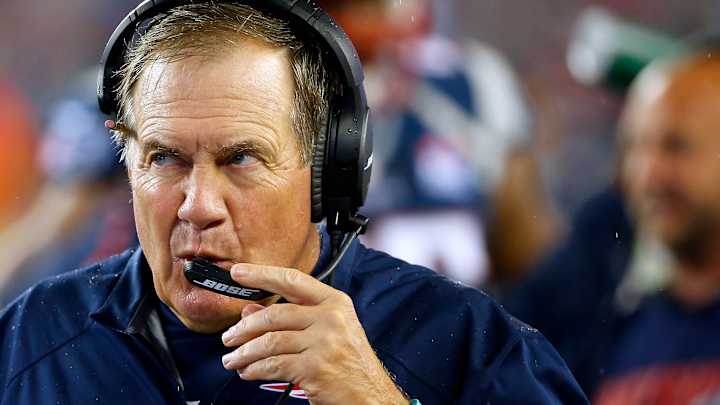NFL headset technology better but not perfect

The NFL upgraded the coach-to-player communication system three years ago and now it's apparent the coach-to-coach headsets are due for an upgrade, too.
Following Pittsburgh's 28-21 loss at New England in the 2015 opener, Steelers coach Mike Tomlin complained about headset failures, which he charged are ''always the case'' when playing in New England.
The Steelers said Friday they don't plan to file a formal complaint and the league said the Patriots did nothing wrong. But the Patriots are under scrutiny after the team accepted punishment for using deflated footballs and Tom Brady fought his suspension. Last decade, the Patriots were punished for videotaping the hand signals of opposing coaches.
NFL vice president of football communications Michael Signora said the communications equipment falls under the jurisdiction of the league, and that the headset problems were a function of a power issue at the stadium that was made worse by foul weather but was fixed during the game.
The league added Friday that ''it involved no manipulation by any individual; and that the Patriots had nothing to do with it. The issue was promptly resolved and there were no further problems for the remainder of the game. We will continue to review the matter to determine if there are technical steps that can be taken to avoid similar problems from occurring in other games.''
Players and coaches say headsets used to communicate with quarterbacks and designated defenders on the field have become more reliable in recent seasons after the league switched from the outdated analog communication system to a digital network in 2012, but problems persist in the coach-to-coach channels.
Sometimes, they hear static, crossed signals, noises that aren't supposed to be there - like the Patriots' radio broadcast that Tomlin said he and his staff had to listen to on their headsets in the first half Thursday night.
''With radio frequencies, there's millions of factors that come into play, so I couldn't tell you exactly what happened there,'' said Alex Shada, director of operations for Gubser & Schnakenberg LLC, the Lincoln, Nebraska-based provider of coach-to-player communication systems for the NFL.
Gubser & Schnakenberg only provides the coach-to-player system; the coach-to-coach systems aren't as secure and are open to more interference, teams say.
''It's rare that I've gone through an NFL game that there was not a problem with the headset,'' Browns coach Mike Pettine said, noting there's often dead zones in certain spots on the sideline.
Pettine said the coach-to-coach communication system would soon be upgraded.
''The system that we're using, it's my understanding that it's going to be replaced. That, to me, has been in the works,'' Pettine said. ''We've talked about it in the offseason. We're going to get through this season with what we have and there are problems with it.''
Coaches and coordinators began talking to quarterbacks with radios in 1994 and miscommunications and mishaps were an occupational hazard with hot dog vendors, musicians, and truckers have somehow ending up on team radios until a few years ago when things got much, much better.
The digital system is easier to use. There's no longer a delay preceded by a beep to wait for the frequency to clear. Instead, coaches now push a button and can talk instantly and with clearer sound.
The helmets are equipped only with a speaker, not a microphone. So, the player cannot talk back to the coach.
Each team is only allowed one live helmet, designated by a small green dot on the back, on the field at a time. Once the 40-second play clock begins, coaches have 25 seconds to make a call and pass on information. The microphones for all the radio transmitters shut off automatically at the 15-second mark, so the coaches can't give live advice during a play. A league official is on site to monitor.
The NFL has said military-grade encryption codes protect the frequencies.
Obviously, signals still get crossed in the coach-to-coach communications though.
''It's just like anything else you've got to work through on game day, like an injury or something,'' Broncos coach Gary Kubiak said. ''You've got to battle your way through it.''
---
AP NFL website: www.pro32.ap.org and AP NFL Twitterfeed: www.twitter.com/AP-NFL
---
AP Sports Writer Tom Withers in Berea, Ohio, contributed to this report.
---
Follow AP Pro Football Writer Arnie Melendrez Stapleton on Twitter: http://twitter.com/arniestapleton
